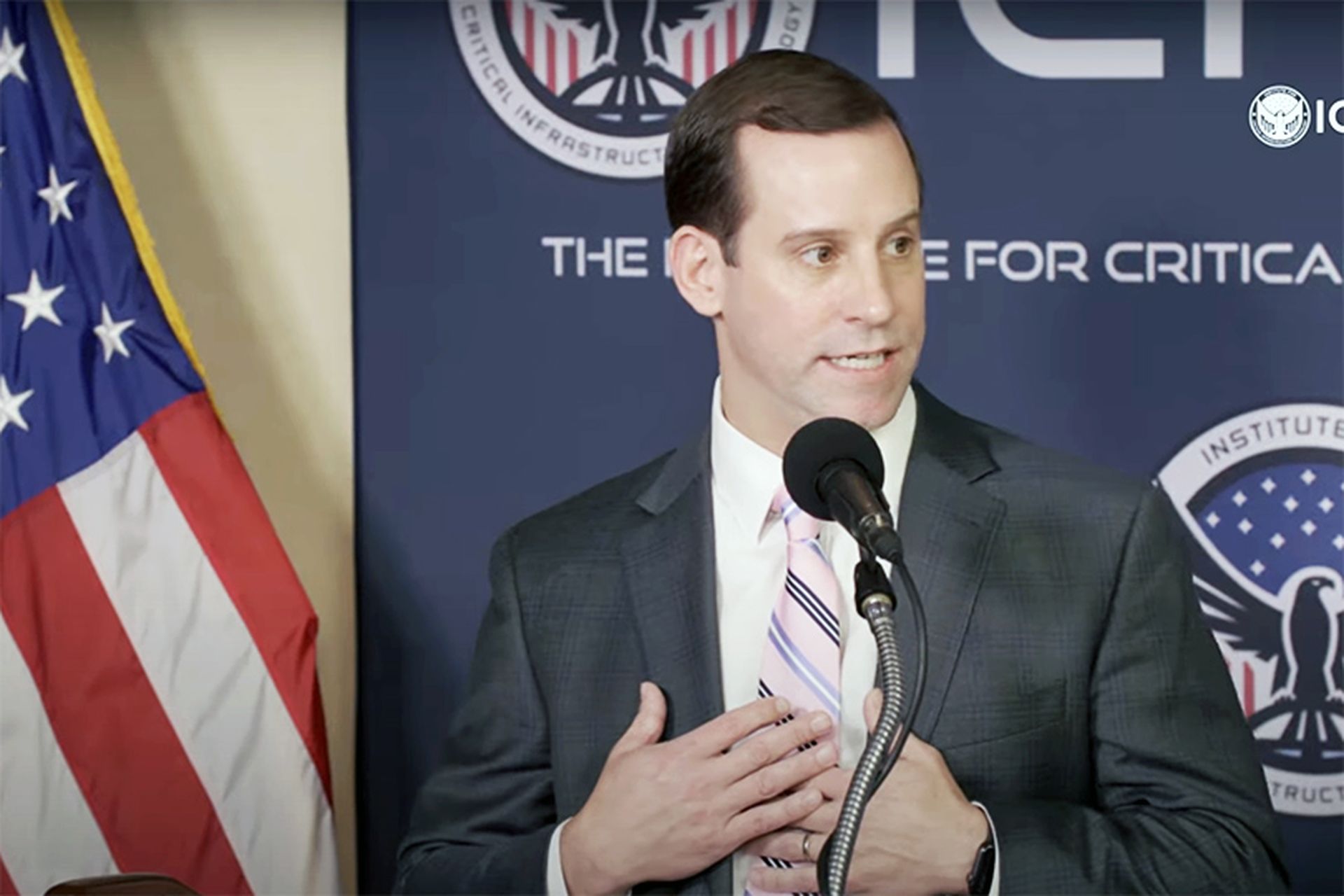The cyber battlefield is always shifting, demanding nimble new strategies and innovative approaches to mitigating threats.
AI-powered hackers generate deepfake scams that mimic CEOs with chilling accuracy, ransomware gangs paralyze hospitals mid-surgery and cybercriminals exploit automation to deploy thousands of attacks in minutes.
The global average cost of a data breach climbed to $4.88 million in 2024, a 10% increase from the previous year, according to
IBM’s Cost of a Data Breach Report. Meanwhile, new attack vectors are giving cyber gangs new opportunities to perpetrate ever more sophisticated and financially devastating cyberattacks,
according to Sophos.
This threat dynamic has always pushed defenders to evolve and go beyond traditional security models and reach for the next better solution. However, the Eureka moment needed to build the next game-changing cybersecurity solution can’t be turned on like a lightbulb.
Innovation is the core ingredient to new breakthrough solutions - be it in cybersecurity or computer science. Experts identify three drivers to cultivate innovation within an organization: leadership, urgency to defend against an attack and external forces such as cybersecurity market conditions.
The crisis-driven evolution of cybersecurity
For decades, cybersecurity innovation has been driven by crisis. The
2013 Target breach, which exposed 40 million credit card details, forced businesses to rethink security strategies and accelerated the adoption of
zero trust frameworks. That same year, Edward Snowden’s
revelations about government surveillance fueled a global shift toward
end-to-end encryption.
In 2017, the
WannaCry ransomware attack spread across 150 countries in just 24 hours, exploiting outdated software and crippling hospitals, banks, and businesses. That attack became a wake-up call, forcing organizations to abandon legacy systems and invest in
AI-driven threat detection.
More recently,
the SolarWinds attack (2020) and
Colonial Pipeline ransomware incident (2021) highlighted the fragility of supply chain security and the devastating impact of cyberattacks on critical infrastructure.
The Colonial Pipeline attack was its own turning point. A single compromised password led to a ransomware event that shut down 5,500 miles of fuel supply along the U.S. East Coast. Gas stations ran dry, flights were delayed, and panic-buying led to widespread fuel shortages. The attack exposed the vulnerability of critical systems and forced governments and corporations to rethink how they protect essential infrastructure.
But just as defenders have adapted, so have attackers. The newest wave of cyber threats is unlike anything before, fueled by artificial intelligence and automation.
David Redekop, founder and CEO of ADAMnetworks and a leading expert in zero trust security, sees this as an inevitable clash. "We are entering an AI-versus-AI battlefield. The only way to stay ahead is to shift from blocking bad activity to only allowing the known good."
Government officials share the same urgency. Jen Easterly, former director of the Cybersecurity and Infrastructure Security Agency (CISA)
who stepped down from her position on Jan. 20, has warned that AI-driven cyber warfare demands equally advanced defense mechanisms. "We are facing a world where machines attack machines. Our defenses must be just as proactive and sophisticated."
The economy’s influence on cybersecurity innovation
Cybersecurity innovation doesn’t happen in a vacuum.
Economic trends, regulatory pressures, and financial constraints determine how much companies are willing — or able — to invest in security advancements. When money is flowing, startups thrive, research accelerates, and groundbreaking technologies emerge. But when economic conditions tighten, cybersecurity budgets are often the first to get slashed — a dangerous gamble in an era where cyberattacks are relentless.
This cycle has played out repeatedly. During the dot-com boom of the 1990s and early 2000s, companies rushed to build firewalls and antivirus software, spurring the first wave of modern cybersecurity.
The 2008 financial crisis, however, forced many firms to cut security spending, leading to a surge in data breaches and hacking incidents. That economic downturn, ironically, set the stage for the rise of cybersecurity giants like CrowdStrike, Zscaler, and SentinelOne, which capitalized on businesses’ newfound desperation for cost-effective, cloud-based security solutions.
The
COVID-19 pandemic accelerated yet another shift. With the explosion of remote work, companies had no choice but to invest heavily in zero-trust models and endpoint security. Cybersecurity spending surged to record levels as organizations scrambled to protect their remote workforce from an unprecedented wave of cyberattacks.
But today, rising interest rates and shifting venture capital priorities have slowed startup funding, leading to a wave of mergers and acquisitions instead of fresh innovation. Google, Microsoft, and Palo Alto Networks are buying smaller cybersecurity firms, absorbing their technologies into existing ecosystems rather than fostering disruptive breakthroughs, according to experts.
The consequences of economic belt tightening on cybersecurity are real — and sometimes catastrophic. In 2015, the
U.S. Office of Personnel Management (OPM) suffered a massive data breach, exposing sensitive information on over 21 million federal employees — including fingerprints and security clearance details. A
later investigation found that years of budget cuts and outdated security systems left OPM vulnerable, creating the perfect storm for hackers to infiltrate the agency’s networks undetected.
Nicole Perlroth, cybersecurity journalist and author of "
This Is How They Tell Me the World Ends," stresses that cutting security budgets in tough economic times is a short-sighted mistake. "The cost of ignoring security is far greater than the cost of proactive investment," she warns in her book.
Innovation under pressure
However, the narrative, when the budgets falters, technology innovation suffers, isn’t a golden rule.
Companies like DeepSeek are proving that breakthroughs can still happen under constraints, be it financial or other.
DeepSeek, a Chinese AI startup, claims it cost $6 million and used a mere 2,048 GPUs to build an AI chatbot similar to OpenAI and Google. It should be noted that DeepSeek development costs
have been disputed. By comparison, it is estimated that OpenAI spends
$5 billion per year in development costs and relies on over a 100,000 GPUs.
While companies like OpenAI and Google train their AI models using Nvidia’s most advanced GPUs, DeepSeek has been shut out from this technology due to U.S. export restrictions. Without access to H100 and A100 chips, DeepSeek has had to rely on less powerful Chinese-made alternatives, which limits training speed, efficiency, and model performance.
Beyond hardware limitations, DeepSeek has also operated on a significantly smaller budget than its Western counterparts. Unlike OpenAI, which has received billions in funding from Microsoft, DeepSeek has had to stretch its resources, optimize its architecture, and develop workarounds to compete.
Despite these constraints, DeepSeek has proven that AI innovation can happen even under severe limitations. The company has focused on efficiency over raw power, demonstrating that success in cybersecurity isn’t always about who has the best tools — but who can do the most with what they have.
Leadership, open innovation, and the future of cybersecurity
Beyond financial pressures, corporate leadership and open-source collaboration are essential drivers of cybersecurity progress. Companies that invest in internal security innovation often set the industry’s direction.
Google’s 20% Rule, which encouraged engineers to dedicate time to experimental projects, has led to major security breakthroughs.
Microsoft’s Secure Future Initiative, launched after multiple high-profile breaches, mobilized over 34,000 engineers to overhaul its security framework.
But cybersecurity innovation isn’t limited to major corporations. The
open-source movement has played a transformative role, enabling security researchers to collaborate and share cutting-edge tools. Projects like
Metasploit,
OpenMCT, and
DNSharmony have strengthened defenses across industries. However, this collaboration comes with risks. Supply chain attacks, such as the
Log4j vulnerability and the SolarWinds breach, have demonstrated how hackers can infiltrate widely used software, compromising thousands of organizations at once.
Even the most advanced technology cannot eliminate one of cybersecurity’s biggest threats: human error. A
ProofPoint study indicates that 88% of security breaches result from mistakes, whether it’s a misconfigured cloud server, a phishing email, or an unpatched vulnerability. Compounding this issue is the ongoing cybersecurity workforce shortage, which is expected to
reach 3.5 million unfilled positions by 2025. To bridge this gap, organizations are turning to AI-driven automation and low-code security solutions, making it easier for non-experts to contribute to security efforts.
The road ahead: A race against evolving threats
As cyber threats continue to evolve, the future of cybersecurity will be defined by AI-powered defense systems, regulatory frameworks, and the global effort to close the cybersecurity skills gap.
For Redekop, the key to driving future innovation lies in revisiting security fundamentals. “We needed to revisit what hadn’t been done before,” he explains. “At one point, the industry abandoned default deny because it seemed impractical. But when we revisited it with AI-driven automation, it became a scalable solution.”
Looking ahead, the next wave of cybersecurity innovation will be defined by advancements in AI-powered security, the emergence of quantum-resistant encryption, and the ongoing challenge of balancing security and privacy.
As
quantum computing advances, encryption models will need to be re-engineered to withstand new decryption capabilities. Meanwhile, the
regulatory landscape will continue to evolve, forcing companies to navigate the delicate balance between securing sensitive information and protecting user privacy.
Redekop captures the urgency of this moment: "There are decades in which nothing happens, and then there are weeks in which decades happen. We are in one of those weeks."
In the race between attackers and defenders, only one side can afford to fall behind. The next decade will determine whether cybersecurity innovation keeps pace with evolving threats — or whether the future of digital security belongs to the adversaries.










